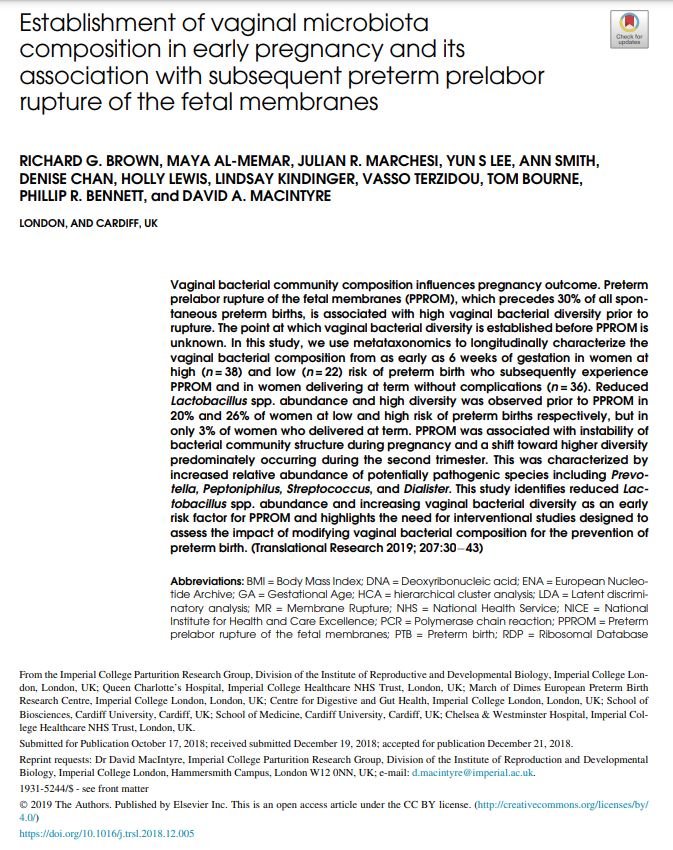
Studies
Studies
The potential prebiotic effect of 2-Butyloctanol on the human axillary microbiome
The aim of this study was to investigate the prebiotic effect of a skin-care ingredient, 2-butyloctanol, on the human axillary microbiome.
Microbial community characterization in advanced water reclamation for potable reuse
Organisms that can tolerate ozone and form biofilms define microbial community in subsequent biofilters.
Detecting Microbial Dysbiosis Associated with Pediatric Crohn Disease Despite the High Variability of the Gut Microbiota
We have also substantially improved the accuracy of the diagnosis based on the microbiota from stool samples, and we found that the ecological niche of a microbe predicts its role in Crohn disease.
A 28 Day Clinical Assessment of a Lactic Acid-containing Antimicrobial Intimate Gel Wash Formulation on Skin Tolerance and Impact on the Vulvar Microbiome
Effects of the gel wash on vulvar skin microbiota were studied by performing bacterial 16S rRNA and fungal internal transcribed spacer (ITS) microbial richness and diversity analysis.
Insights into the local interaction mechanisms between fermenting broken maize and various binder materials for anaerobic digester structures
This paper aims to determine the biogeochemical dynamic interaction phenomena at play between the biowaste and cementitious matrices at the local scale, and to identify durable binders in such environments.
Draft Genome Sequences of Acidithrix sp. Strain C25 and Acidocella sp. Strain C78, Acidophiles Isolated from Iron-Rich Pelagic Aggregates (Iron Snow)
We report the draft genome sequences of two acidophiles, the Fe-oxidizing bacterium Acidithrix sp. strain C25 and the putative Fe-reducing Acidocella sp. strain C78.
Patient genetics is linked to chronic wound microbiome composition and healing
This study, being the first to identify patient genetic determinants for wound microbiomes and healing, implicates genetic variation determining cellular adhesion phenotypes as important drivers of infection type.
The association between vaginal bacterial composition and miscarriage: a nested case-control study
To characterise vaginal bacterial composition in early pregnancy and investigate its relationship with first and second trimester miscarriages.
Fracture-Associated Microbiome and Persistent Nonunion: Next-Generation Sequencing Reveals New Findings
Nonunion cases may harbor microbes that escape detection by conventional culture methods that contribute to persistence. Our aim was to investigate the application of NGS pathogen detection to nonunion diagnosis.
Innate Recognition of the Microbiota by TLR1 Promotes Epithelial Homeostasis and Prevents Chronic Inflammation
Our findings demonstrate that sensing of the microbiota by TLR1 may provide key signals that regulate the colonic epithelium, thereby limiting inflammation through the prevention of bacterial attachment to the mucosa and exposure to the underlying immune system.
A Compositional Look at the Human Gastrointestinal Microbiome and Immune Activation Parameters in HIV Infected Subjects
The composition of the HIV microbiome was significantly different than that of controls; it was less diverse in the right colon and terminal ileum, and was characterized by loss of bacterial taxa that are typically considered commensals.
Pilot Study: Next-generation Sequencing of the Semen Microbiome in Vasectomized Versus Nonvasectomized Men
To investigate if vasectomy induces changes in the seminal microbiome via comparison of semen samples from men before and after vasectomy, and if the seminal microbiome profiles for vasectomized men follow a particular pattern with respect to diversity and abundance.
Draft Genome of the Common Snapping Turtle, Chelydra serpentina, a Model for Phenotypic Plasticity in Reptiles
We identified 3.27 million SNPs in the reference turtle, which indicates a relatively high level of individual heterozygosity.
Potential effects of bacterial communities on the formation of blooms of the harmful dinoflagellate Prorocentrum after the 2014 Texas City “Y” oil spill (USA)
This study provides new evidence for the potential role of oil-degrading bacteria in the formation of phytoplankton blooms after an oil spill.
In vitro multispecies Lubbock chronic wound biofilm model
We have defined a realistic in vitro multispecies biofilm model simulating the functional characteristics of chronic pathogenic biofilms and developed effective tools for its characterization and analyses.
An intermittent power supply scheme to minimize electrical energy input in a microbial electrolysis cell assisted anaerobic digester
Overall, the results of this study suggest that MEC-AD operation does not need a continuous power supply, and higher energy efficiency can be effectively achieved by intermittently powering the reactor.
Establishment of vaginal microbiota composition in early pregnancy and its association with subsequent preterm prelabor rupture of the fetal membranes
This study identifies reduced Lactobacillus spp. abundance and increasing vaginal bacterial diversity as an early risk factor for PPROM and highlights the need for interventional studies designed to assess the impact of modifying vaginal bacterial composition for the prevention of preterm birth.
Correlation between postmortem microbial signatures and substance abuse disorders
The results demonstrated that the microbial abundance in younger-aged cases were found to have significantly more operational taxonomic units than older cases. Using weighted UniFrac analysis, the influence of substances in overdose cases was found to be a significant factor in determining microbiome similarity.
Equine sinusitis aetiology is linked to sinus microbiome by amplicon sequencing
To describe sinus microbiota in samples from horses with sinusitis and compare microbiota and the presence of antimicrobial resistance genes between primary, dental-related and other secondary causes of sinusitis
Bacterial community assemblages in classroom floor dust of 50 public schools in a large city: characterization using 16S rRNA sequences and associations with environmental factors
Characterizing indoor microbial communities using molecular methods provides insight into bacterial assemblages present in environments that can influence occupants’ health.
Abnormal vaginal microbiome associated with vaginal mesh complications
The presence of Veillonella spp. could be associated with mesh contraction. Our study did not identify vaginal microbiotic dysbiosis as a factor associated with exposure. Larger cohort studies would be needed to distinguish the vaginal microbiome of women predisposed to mesh‐related complications for targeted phenotyping of patients who could benefit from TVM surgery.
Molecular diagnostics and personalized medicine in wound care: assessment of outcomes
Implementation of personalized topical therapeutics guided by molecular diagnosis resulted in statistically and clinically significant improvements in outcome. The integration of molecular diagnostics and personalized medicine provides a directed and targeted approach to wound care.
Microbiome Structural and Functional Interactions across Host Dietary Niche Space
Our findings help clarify how metagenome community structure-function relationships contribute to deterministic processes in community assembly, and describe the basis for metagenomic differences across ecologically similar hosts.
Chronic wound microbiome colonization on mouse model following cryogenic preservation
These findings indicated that changes should be expected to occur to community structure after colonization, and that compositional change is likely due to the rapid change in infection context as opposed to preservation strategy.
Obligate anaerobes are abundant in human necrotizing soft tissue infection samples - a metagenomics analysis
The goal of this study was to address this gap in knowledge by characterizing NSTI microbial communities through molecular diagnostics.
Diversity of the Human Skin Microbiome Early in Life
Within days after birth, rapid surface colonization of infant skin coincides with significant functional changes. Gradual maturation of skin function, structure, and composition continues throughout the first years of life.
Human Thanatomicrobiome Succession and Time Since Death
These results suggest that comprehensive knowledge of the number and abundance of each organ’s signature microorganisms could be useful to forensic microbiologists as a new source of data for estimating postmortem interval.
Antibiotics, Bacteria, and Antibiotic Resistance Genes: Aerial Transport from Cattle Feed Yards via Particulate Matter
Airborne PM derived from feed yards facilitated dispersal of several veterinary antibiotics, as well as microbial communities containing ARG. Concentrations of several antibiotics in airborne PM immediately downwind of feed yards ranged from 0.5 to 4.6 μg/g of PM.
Deciphering the Role of Skin Surface Microbiome in Skin Health: An Integrative Multiomics Approach Reveals Three Distinct Metabolite‒Microbe Clusters
The advent of 16S RNA profiling and shotgun metagenomics has enabled a holistic approach to the study of the skin microbiome composition. Despite the interesting findings in this rapidly developing scientific area, the big question remains: What role does the microbiome play in skin physiology?




























